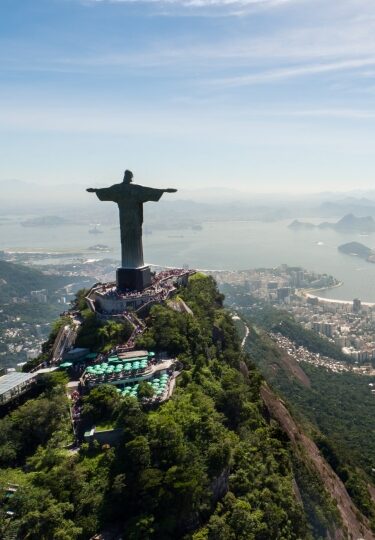So what is Brazil known for, you may ask? Of course, in many regards, this country’s outsized reputation precedes itself. This is the land of beautiful people, glorious beaches like Copacabana or Ipanema, and legendary soccer players, including Pelé. Oh, and then there’s a little party called Carnival, which spills over into the streets with a nationwide spectacle of color and culture each year.
For many, Brazil is most known for Rio, but the world’s fifth-largest country is vast, with more than 200 million citizens. It’s packed in with stunning geological features that include not just an enviably lush coastline, but natural beauty spots like the massive Amazon rainforest, teeming with biodiversity, and the thundering Iguazu Falls.
Along the 4,600-mile-long Atlantic Ocean coast, the daily rhythms of life are intimately intertwined with the waves, where beach parties, volleyball, and teeny bikinis make up the tanned, toned, beach-cultured scene.
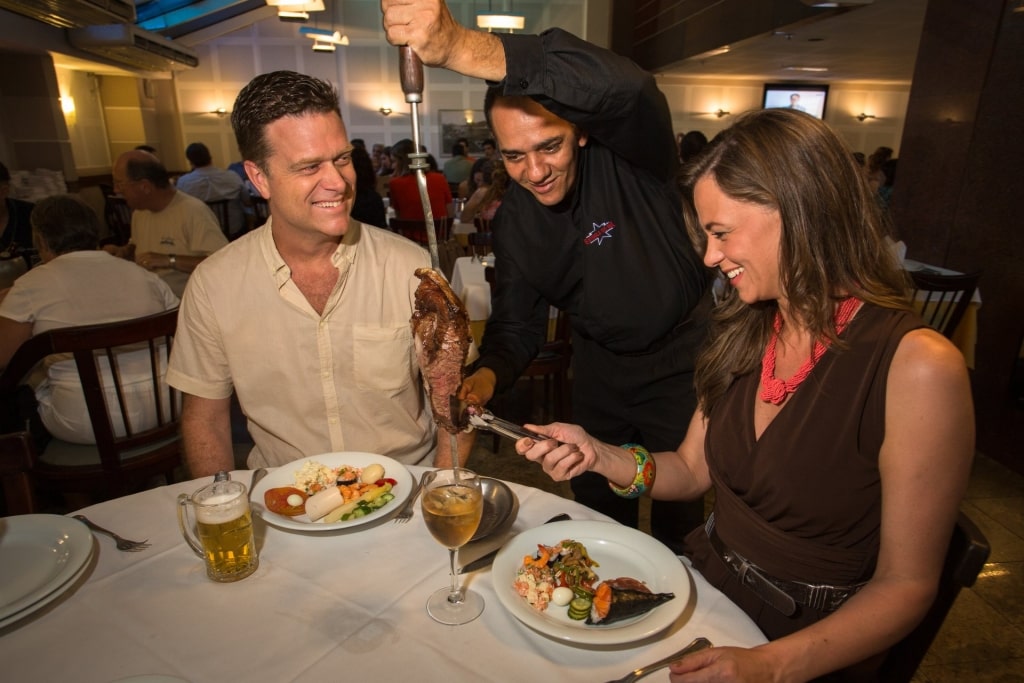
Of course, all of that liveliness requires fuel, whether it’s Brazilian coffee or caipirinhas that will help you keep pace. Multiculturalism spills over into all facets of Brazilian culture, including food, music, sports, and language, with the country tapping into its population’s diverse ethnicity. There are strong European roots here, largely via Portugal, with Portuguese the official language, as well as Amerindian and African.
While there are so many possibilities for inclusion on a list outlining what Brazil is most known for, here are just 10 of our top picks of things you absolutely shouldn’t miss while visiting this vibrant South American country.
Music to Move to
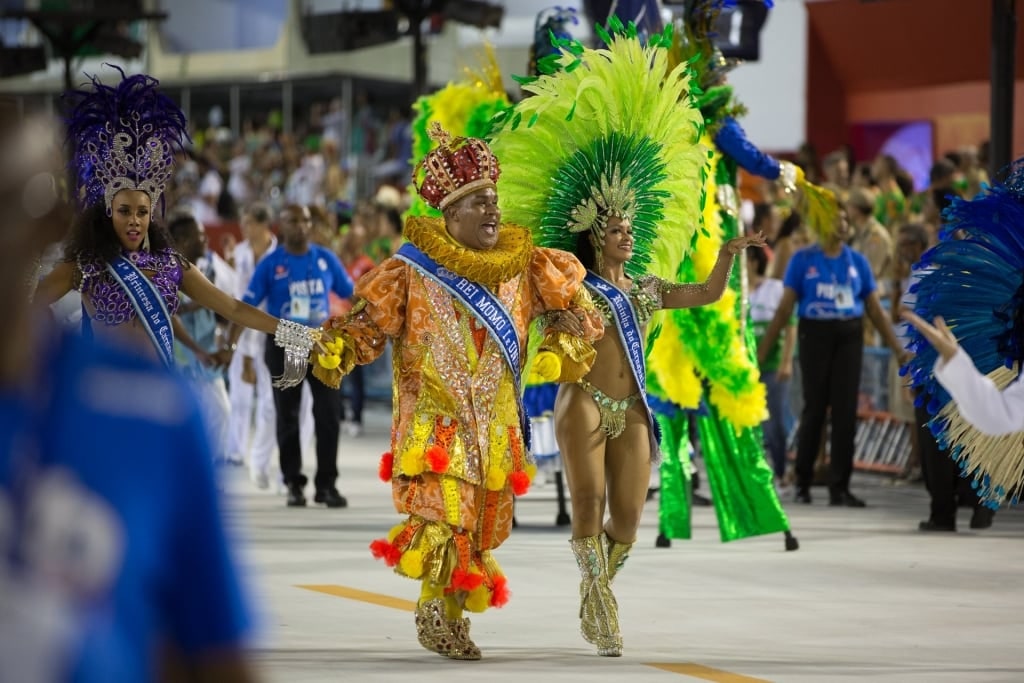
Carnival
Brazil’s distinct brand of liveliness comes with a soundtrack that’s all its own. Indeed, music is a cornerstone of Brazilian culture, with several diverse musical styles that are unique to the nation.
What Brazil is most known for is high-energy samba, the national dance and accompanying music that’s heavily influenced by African drumming traditions. It forms the backbone of Carnival season, as evidenced by the extravagantly costumed samba schools that are represented there.
Bossa nova (translating from Portuguese to “new trend”) is another of the nation’s most popular musical exports, which pairs elements of samba and American jazz. The genre’s seductive melodies were popularized worldwide back in the 1960s with the iconic hit, The Girl From Ipanema.
There are many more musical styles to sample, too, among them tropicália, forró, and more, and ample venues at which to get your fill of live music throughout Brazil.
Carnival Celebrations
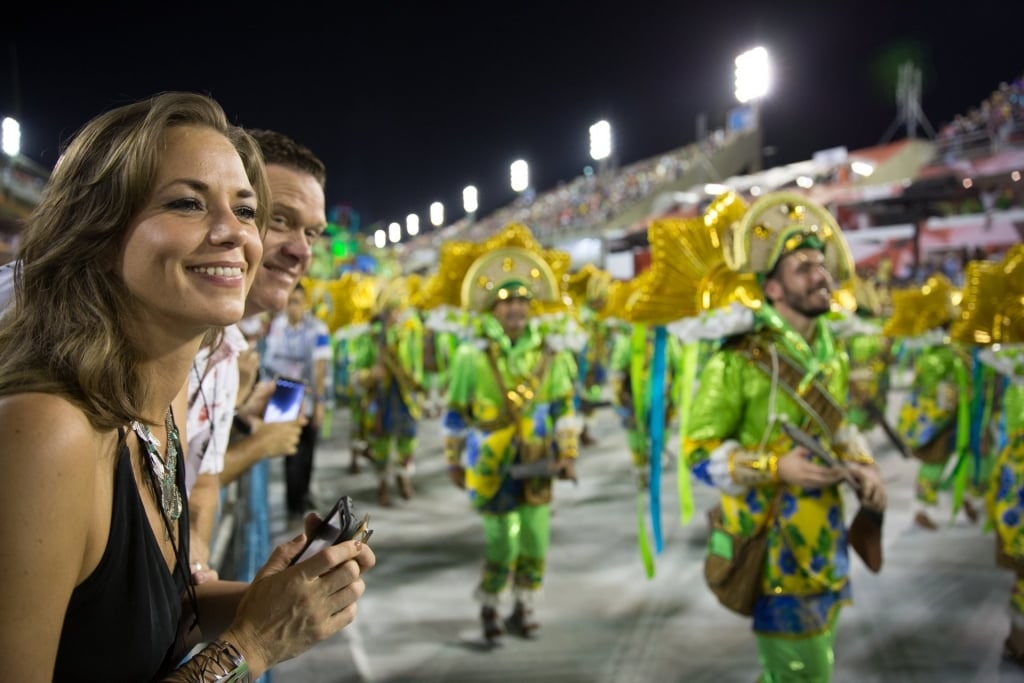
Carnival
If you like Brazilian music, there will be plenty to go around during Carnival, the country’s biggest annual celebration, spanning a whole week of festivities. The Brazil Carnival unfolds the week before Lent, a period of penitence in the Christian world, which typically happens in February and/or early March. It’s an exuberant party, filled with samba music and dance moves, elaborate costumes, and all-round pageantry and revelry.
Rio is the most famous and spectacular setting for Carnival, and it certainly doesn’t disappoint, especially where 12 of the city’s top samba schools turn out for a lavish parade at the Sambadrome, complete with music, costumes, choreography, and special effects like fireworks. Not to mention the glamorous balls and countless street and beach parties that take over practically every corner of the city during the festivities.
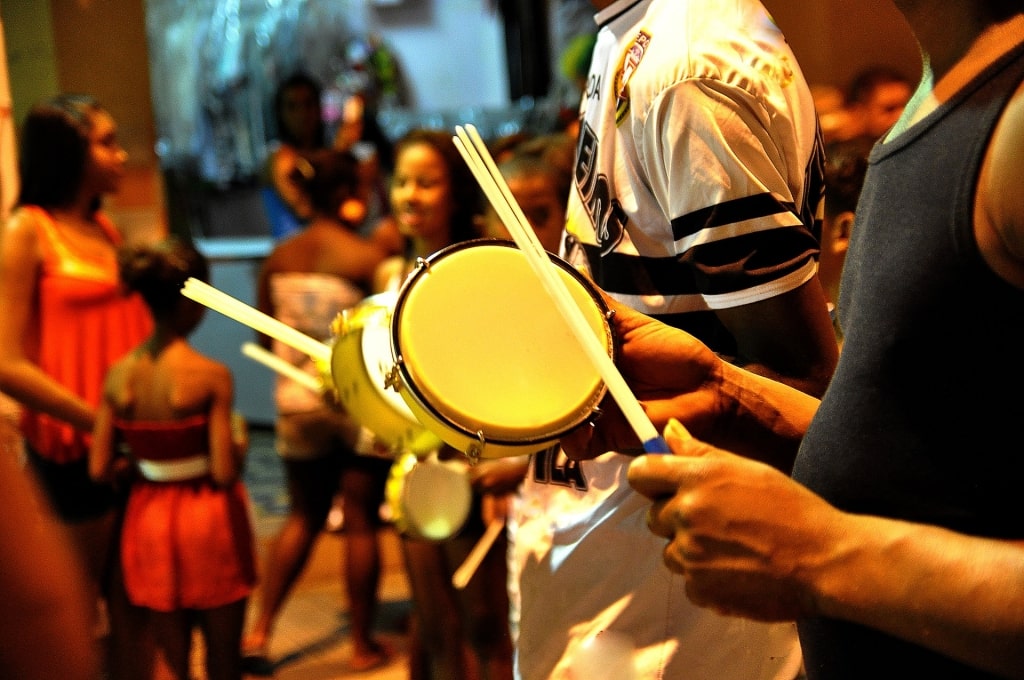
Samba City
Even outside of Carnival time, you can visit Rio’s Samba City, a cultural center and warehouse complex that’s home to some of the city’s premier samba schools. Here, you can learn more about the festivities, and watch Carnival floats and costumes being created.
Rio isn’t the only destination in Brazil with noteworthy Carnival celebrations. Almost every Brazilian city and town puts forth its own version of the high-energy event, like São Paulo, which also offers impressive levels of music and dancing. The Buzios Carnival, meanwhile, is especially known for being LGBTQ-friendly.
Soccer Mania
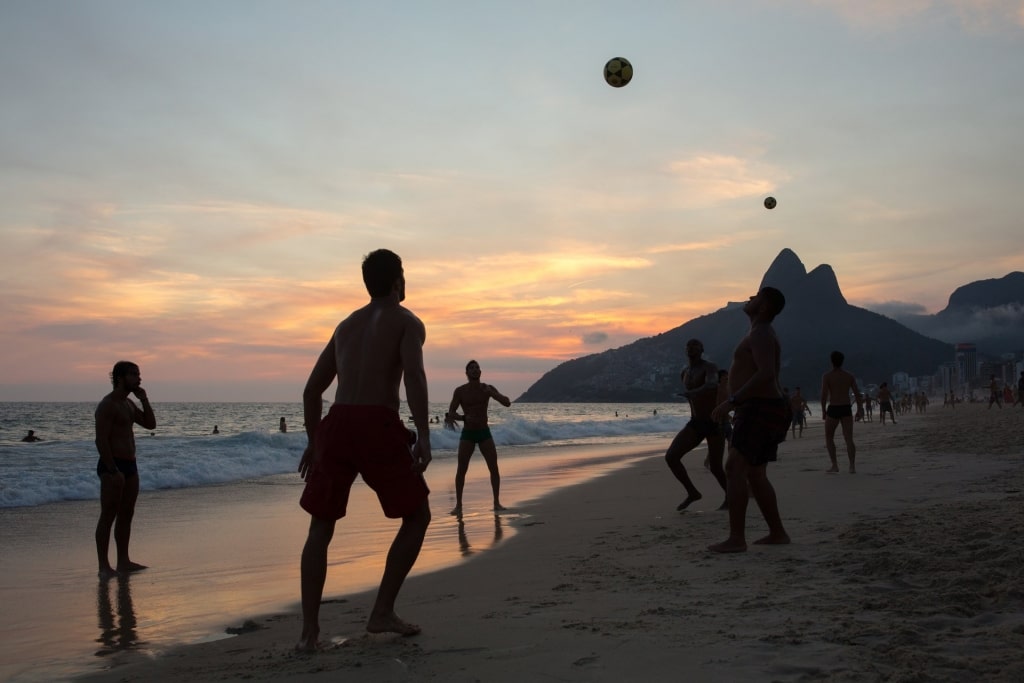
Soccer
Brazilian passion for futebol (or soccer) knows no bounds, and that dedication to the sport has reaped plenty of rewards for the national team, which is one of the world’s most lauded. Brazil has won the FIFA World Cup Championships a record-breaking five times. Not to mention a roster of standout players, from the legendary Pelé, widely considered the greatest footballer of all time, to the modern-day Ronaldo.
Rest assured, young and old, male or female, rich or poor, nearly everybody in this soccer-crazed nation either plays soccer themselves or watches it religiously.

Maracanã, Rio de Janeiro
Seeing a match in the country is a portal into the beating heart of Brazil, where impassioned spectators fill massive stadiums to create a spectacle of waving flags and banners, chants and whistles, pounding drums, and pyrotechnics.
The country’s biggest teams are found in Rio, where the football club Flamengo reigns supreme, followed closely by Fluminense, and São Paulo, home to popular clubs like São Paulo and Corinthians.
Some standout stadiums where you can catch a game include the Maracanã in Rio, the largest stadium in Brazil, and the Art Deco Pacaembú in São Paulo.
Christ The Redeemer
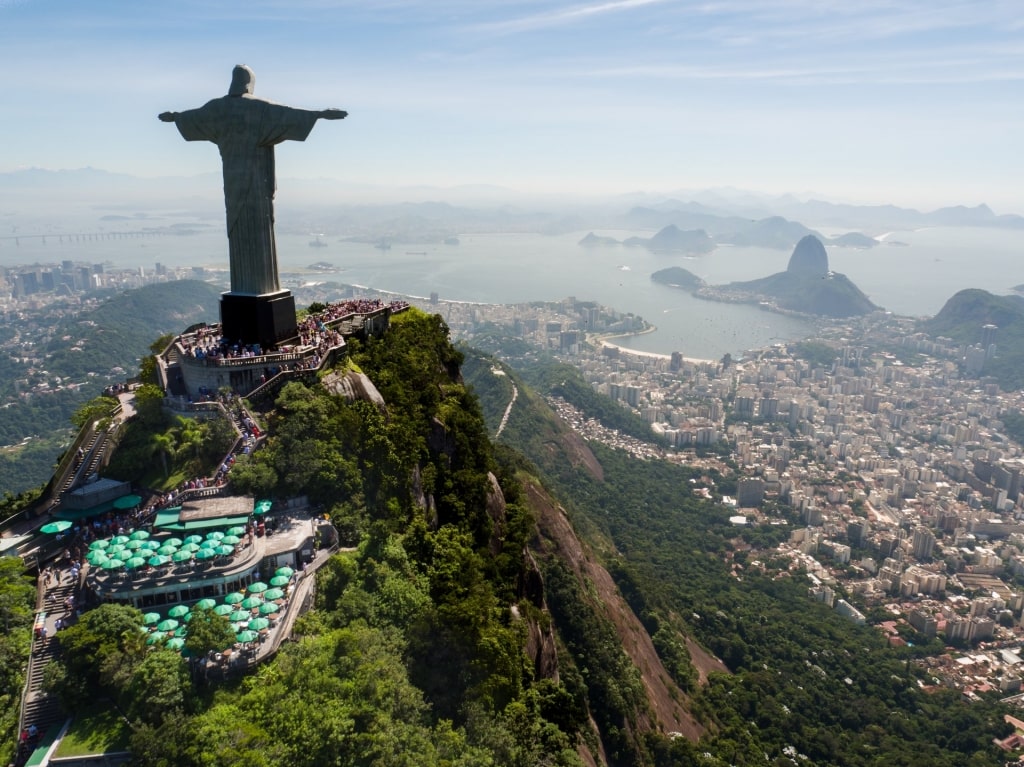
Christ the Redeemer, Rio de Janeiro
One of South America’s most famous landmarks and certainly what Brazil is known for when it comes to must-see attractions, Rio’s 98-foot-high Christ the Redeemer statue hovers above the city from its mountaintop perch. Situated at an elevation of 2,300 feet, atop the city’s Corcovado mountain, the statue of Christ, arms outstretched in a seeming embrace of the city, is a near-omnipresent beacon.
The gleaming, white, Art Deco-style statue, which was crafted by French sculptor Paul Landowski and Brazilian engineer Heitor da Silva Costa has been in place since 1931. A testament to the deep-rooted Christianity within Brazil, the statue has since become one of the nation’s most visited destinations. Little wonder; not only is the statue itself epic, but the panoramic views from its feet, over Rio’s cityscape and bay, are astounding.
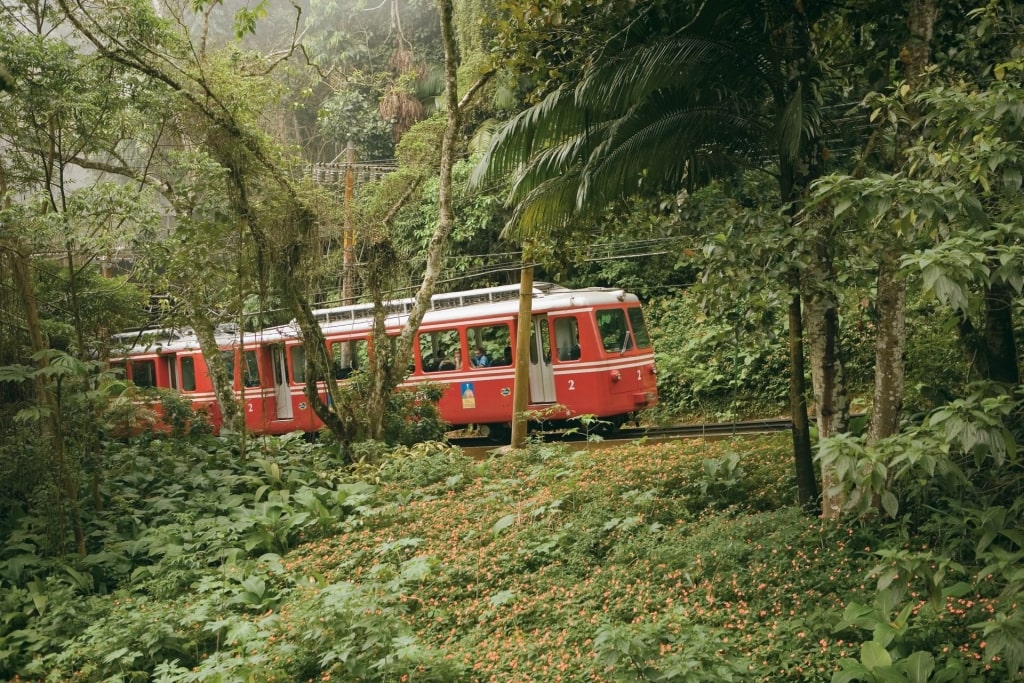
Rio de Janeiro
The ride there and back is part of the fun, including a run on a steep narrow-gauge railway through the Parque Nacional da Tijuca.
Read: Best Skylines in the World
Gorgeous Beaches
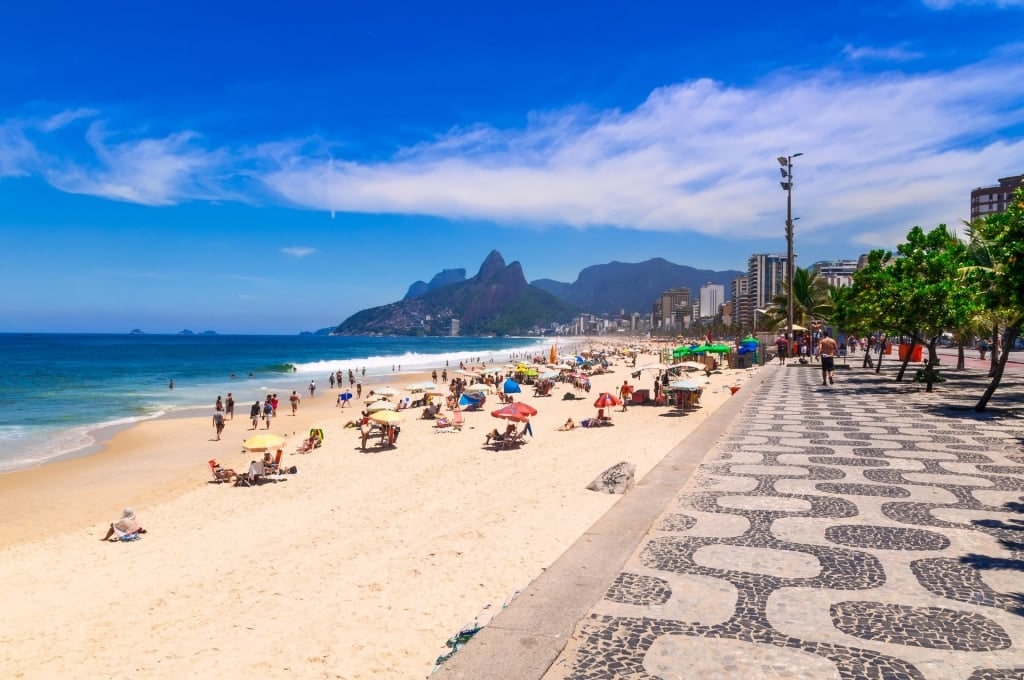
Ipanema Beach, Rio de Janeiro
With some 4,600 miles of Atlantic-facing coastline, beach culture in Brazil is a way of life that’s deeply ingrained into the national psyche. Rest assured, you won’t be out of place if you come to Brazil with the main objective of working on your tan.
Set out for the country’s epic sun, surf, and sand, and you’ll come upon some of the Brazilian beaches’ most distinguishing features. For one, expect an onslaught of vendors who rove the golden shores serving up refreshments like fresh coconuts, fruits, and sweet tea. And don’t expect modesty here: skimpy swimwear is de rigueur. Brazilians are proud of their bodies.
Overall, the beach scene may be more lively than you’re used to. You’ll surely observe energized volleyball games in action, and bronzed Brazilians socializing at beach bars.
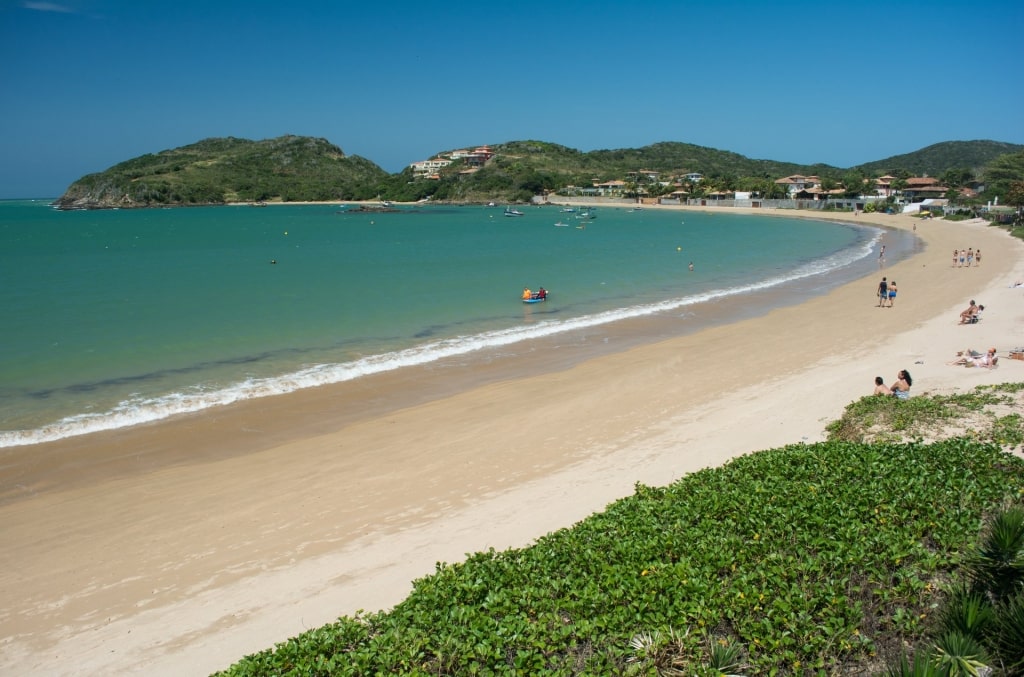
Ferradura Beach, Buzios
You needn’t look outside of major urban centers for some quality beaches. As some of the most famous landmarks in Brazil, Rio’s classic Ipanema and Copacabana require no introduction. Further afield, Ferradura Beach in the resort town of Buzios, or Jabaquara Beach on the Ilhabela archipelago are just a couple of Brazil’s most notable standouts.
Read: 9 Romantic Honeymoon Destinations in South America
Natural Wonders
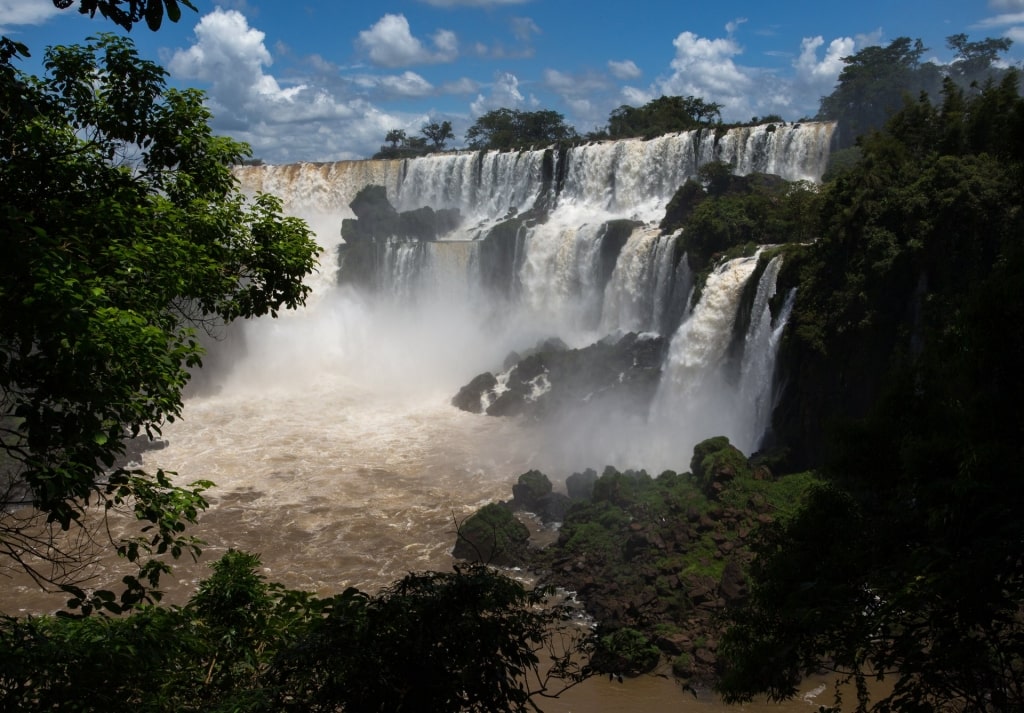
Iguazu Falls
The beach may be what Brazil is most known for, but in a country this vast, natural treasures abound. For many visitors, there are two spots in Brazil that are true showstoppers: The force of nature that is Iguazu Falls, and the unfathomably biodiverse Amazon rainforest.
While much of the famous South American waterfall is situated in neighboring Argentina, part of its cascading chain of some 275 falls cuts into Brazilian territory, too. With dramatic plummets of well over 200 feet, the sound of the crashing falls can be deafening, as it reverberates into the subtropical landscape, itself national parkland filled with exotic flora and fauna.
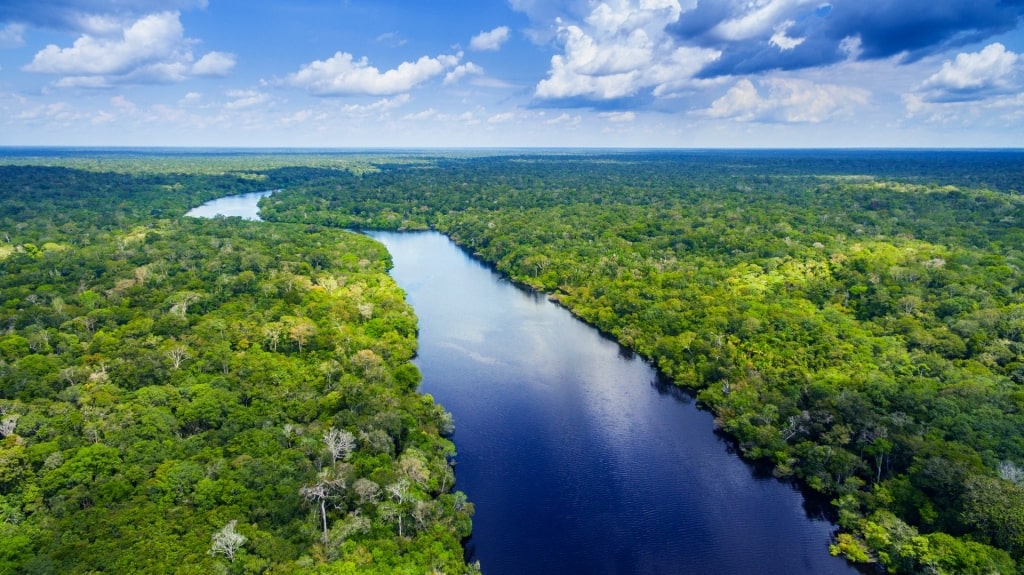
Amazon rainforest
But nothing teems with more biodiversity than the Amazon rainforest, the lungs of the earth, which covers a huge portion of northwestern Brazil. The largest rainforest in the world, measuring in at over 1.4 billion acres, the Amazon spills into surrounding South American countries like Peru and Colombia, though some 60 percent of it is located within Brazil itself.
Visitors here can expect encounters with any of the 2.5 million species of insects or 2,000 mammal and bird species. Not to mention the thousands of species of fish and marine animals that live in the rivers, and tens of thousands of plant and tree species that thrive in this dense, humid forest.
Cooling Caipirinhas
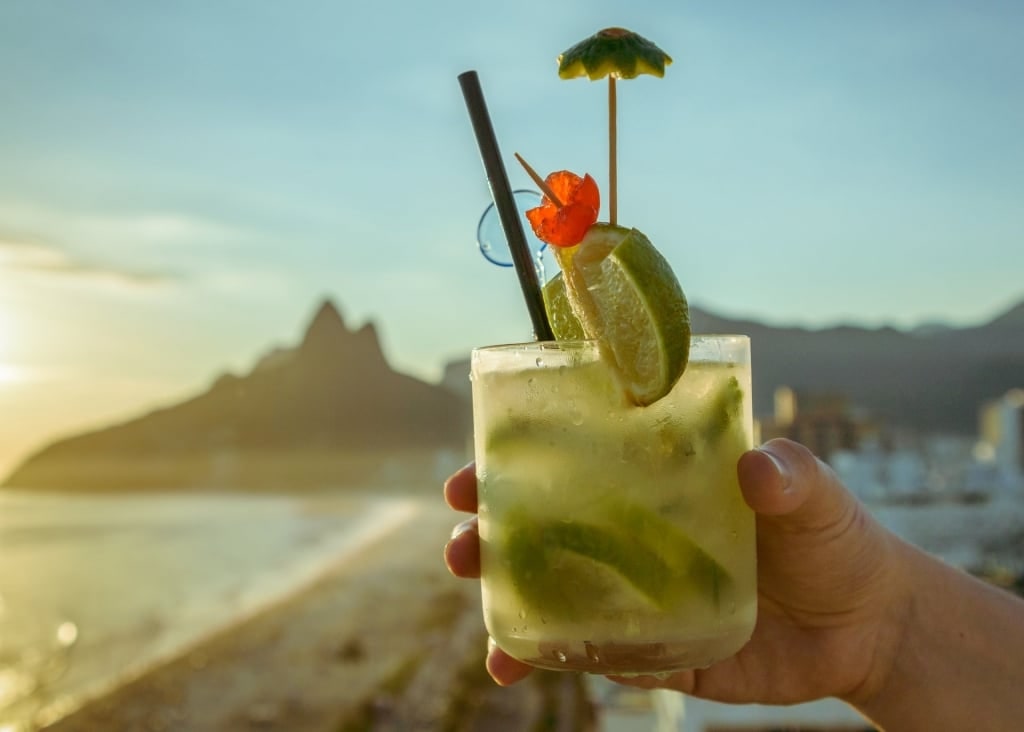
Caipirinha
Indulging in this sour-meets-sweet Brazilian national drink is a rite of passage for any visitor to Brazil. Caipirinhas are made of cachaça, a spirit derived from fermented sugarcane juice, mixed with fresh lime juice and sugar. You’ll find this famous cocktail on the menu of virtually every bar and restaurant in the country.
For a caipirinha with a twist, seek out flavored versions, with options like strawberry or passionfruit, or for a variation on the liquor base of the drink, try caipiroska, which uses vodka instead of cachaça, or caipiríssima, which instead opts for rum.
Whatever you choose, it’s a perfect drink with which to cool off during a balmy summer evening against a sultry soundtrack of Brazilian music.
Coffee Culture
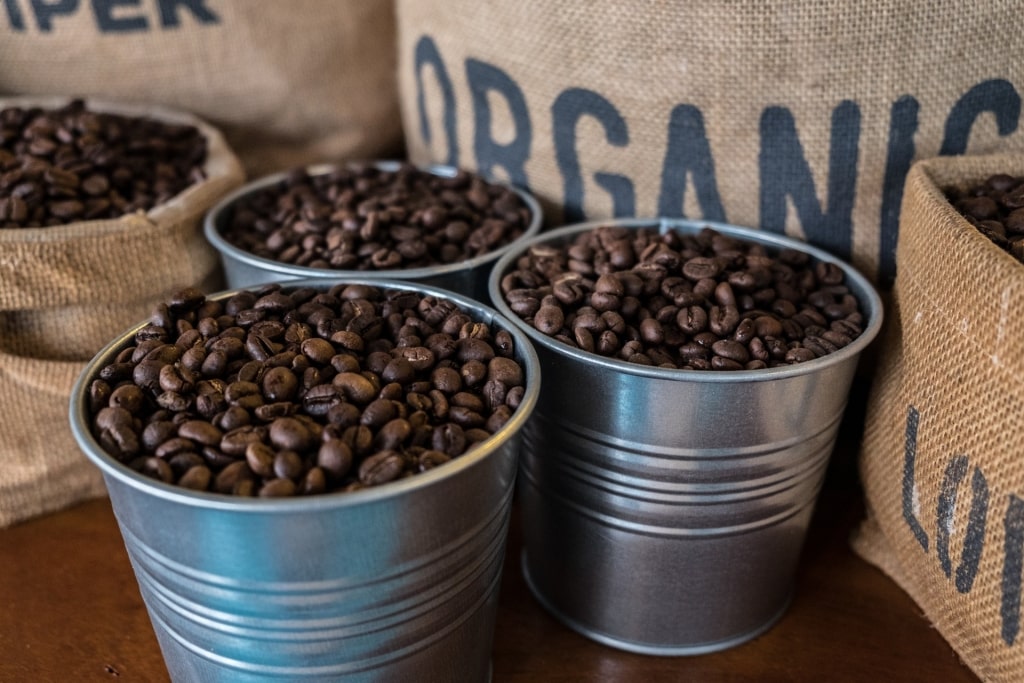
Coffee beans
Coffee connoisseurs will tell you that some of the best coffee in the world comes from Brazil. Indeed, coffee is what Brazil is known for, as the largest exporter on the planet, thanks to its ideal growing conditions and expansive coffee plantations. But plenty is kept for local consumption, too.

Cafezinho
The best Brazilian coffee brews are known for their smooth, low-acid, bittersweet taste, often with subtle hints of pleasant aromas like nuts or chocolate. Follow the lead of local Brazilians and try a small cup of black coffee, called the cafezinho (translating simply to “small coffee”), something locals are seemingly keen to indulge in at any given opportunity, from morning until night. Note that it’s typically drunk as purely as possible, meaning black, though with a lot of sugar.
Portuguese Language
Unlike the rest of Spanish-speaking Latin America, what Brazil is known for is its Portuguese, which is the first language of most Brazilians. First brought to the country by Portuguese settlers in the 16th century, Brazilian Portuguese has evolved over the centuries to offer its own unique pronunciations, spellings, and meanings of words.
Millions of Brazilians can still claim recent Portuguese ancestry, meaning a parent or grandparent, while nearly 400,000 Portuguese—one of the largest immigrant communities in the country—live in Brazil today. Learning a few words of the language will get you a long way.
Captivating Capoeira
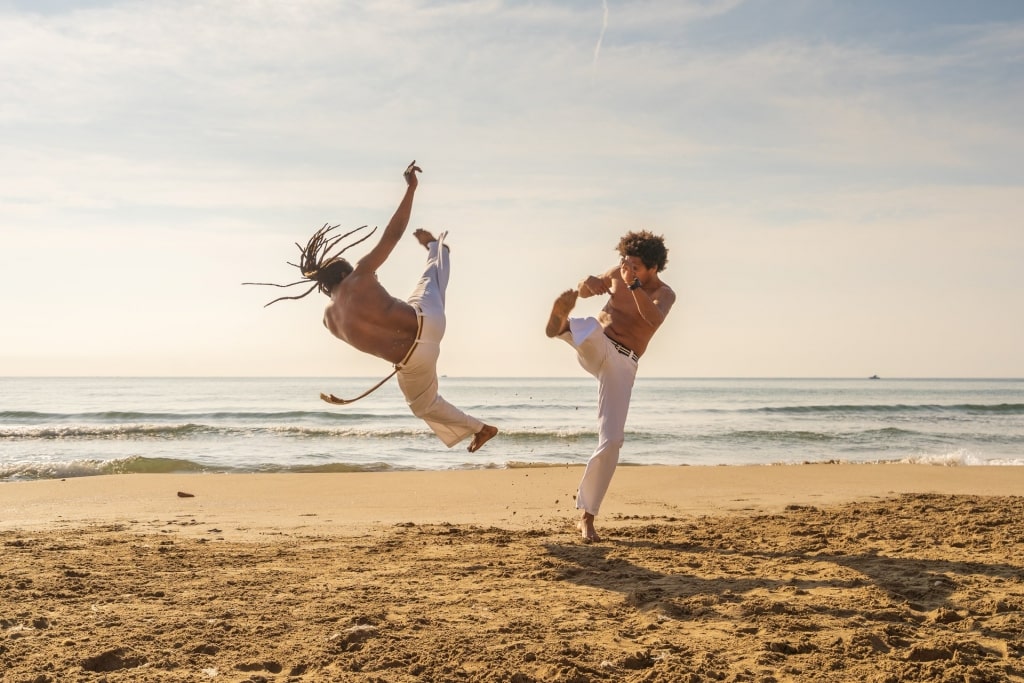
Capoeira
This unusual Brazilian martial art is anchored on dance-like movement, accompanied by a percussion-based musical ensemble and call-and-response singing. More commonly associated with Brazil’s northeastern region, capoeira’s roots are tied to the country’s former enslaved African population, who developed it as a means of self-defense, disguised as dance.
While more sport than dance, a combat display of capoeira—practiced in a circle called a roda—can be captivating to watch, with practitioners, called capoeiristas demonstrating remarkable feats of agility, stamina, and strategic deception. The display of graceful and fast-paced high kicks, aerial somersaults, and other decisively acrobatic movements is nothing short of hypnotic.

Rio de Janeiro
Ready to find out firsthand what Brazil is most known for? Discover the best of Brazil on a luxury cruise vacation. Browse cruises to Brazil on our website and book your Celebrity Cruises vacation today.
